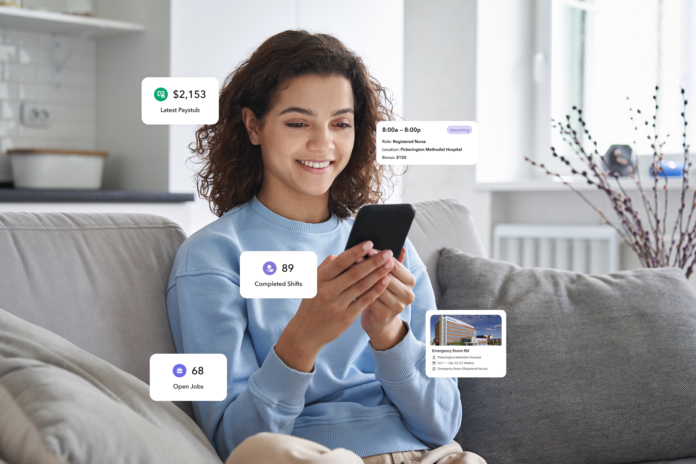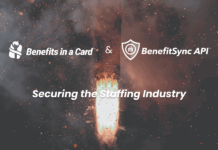
By Tito Goldstein, co-founder and co-CEO of Teambridge
Over the last decade, the labor market has drastically changed for a number of reasons, including the pandemic, shifting generational norms, and the rise of the gig economy. From an environment that was driven by heavy demand, we’ve moved to a market clearly grounded by the limited supply of qualified candidates. Although the demand is still there, the way in which staffing agencies approach their day-to-day has and will continue to change.
Let’s face it: Finding and engaging good people is harder than ever. At this very moment, half of U.S. workers are hunting for their next job and this turnover problem is even worse in the deskless industries, according to the Bureau of Labor Statistics.
Before launching my current company, I spent four years helping to scale one of the fastest-growing companies in history, Uber. Growing the driver app from 4,000 users to 4 million was no easy task, even with multiple massive engineering teams focused on the challenge. Looking back, Uber was essentially a very large tech-enabled staffing firm. We had to attract workers, fill “shifts” in the form of rides and deliveries, and develop incentives to retain our top performers against fierce competition.
While your talent pool might not resemble Uber’s, I’ve found the similarities in their needs and the requirements needed to scale such a business to be uncanny. Yes, healthcare providers and warehouse associates possess different skills from drivers. But the amount of time we all spend on our smartphones daily, and the expectations we have of this technology — to order food, to shop, to bank — is consistent and continuing to expand. Your candidates have come to expect a certain level of convenience, of immediacy, a level of instant self-service even in their professional lives.
To attract, engage, and retain staff in our attention-fragmented world, you need to think like Uber did.
Your mobile-first talent strategy checklist
Many staffing agencies have begun investing in mobile apps. According to Staffing Hub’s State of Staffing Report, 38% already have a mobile app. Some spend years building and maintaining custom solutions. Most firms, however, choose to select whichever mobile offering comes with their workforce management platform.
The challenge? Not all of these mobile solutions are created equal. For staff, the app experience can often feel like the vendor has awkwardly squeezed outdated desktop software into a phone-sized format.
If you’re serious about giving your staff a compelling app, you need to evaluate whether your workforce platform is “mobile-first.” In other words, does it have the power to create a mobile experience that looks, feels, and performs like a consumer-grade app?
Does making that evaluation sound daunting? You’re not alone. In the State of Staffing Report, respondents cited “picking the right digital transformation tools” as one of their top technology challenges.
Let’s chip away at that anxiety. Below are a few of the capabilities you should be on the lookout for when picking a mobile-first platform.
Self-service
Would you rather get support from the DMV website, or DoorDash?
The white glove recruiting service that used to be a strength of an agency, may now be the very thing holding your team back in the age of self-service mobile apps. Any slowdown in the process can cause drop-off in your funnel. According to SHRM, 60% of job seekers abandon applications because they’re too long and complex. When attracting talent, you need to make it effortless for applicants to find new jobs and complete their onboarding paperwork.
Instead of creating an endless back and forth between new hires and your admin team, it’s best to embrace self-service. The best mobile solutions for you should enable your workers and even in some cases your clients to complete most steps on their own. From onboarding, to signing handbooks and watching training videos — the easiest, the fastest, and preferred way is right from the comfort of their phone. This not only shrinks the time to their first placement, but frees your back office from mountains of unnecessary admin work.
Flexible scheduling
What if your company wants to expand to take on a new type of staffing? Allow your staff to claim ad hoc shifts after a contract is done? What happens if a client asks for something specific that no one else wants?
No two staffing agencies are the same, so why should their mobile apps be? What makes an agency stand out is often its unique processes and policies. But those strengths can get lost when using rigid, one-size-fits-all technology that can’t adapt to how the agency actually works.
Worried about losing your secret sauce? Don’t be. Leading platforms include custom matching policies, customizable communication tools, scheduling, approval policies, and more so you can determine how your team operates, and your candidate experiences.
Constant communication
Communication might be the most overlooked feature when selecting a workforce platform. Traditional methods, like bulletins or emails, often get missed on the job, while SMS messages are often the most visible but risk being dismissed as spam.
Giving your admins a single place to manage communications is essential. Modern, mobile-first platforms centralize messaging through intuitive chat interfaces, like WhatsApp or Slack, making it easy for back-office teams to stay connected. They can message individual workers or broadcast opportunities to targeted groups based on attributes you already track, like location, role, or credentials.
A good communication tool also gives staff a direct line to your back-office, messaging schedulers or asking the payroll department questions that otherwise might result in issues downstream. This constant communication keeps staff engagement high while producing measurable business impact, such as reducing missed shifts.
Automation and incentives
Perhaps the most critical factor when choosing a mobile-first platform is its automation capabilities. A beautiful interface can give your mobile experience the right look and feel, but to truly be a consumer-grade app it needs the performance to back that up. This is where automation becomes essential.
One of my favorite use cases from the Uber days and maybe the least favorite for many, was surge pricing. No one likes paying extra for something, but surging was a crucial piece of the Uber puzzle. How can we guarantee fulfillment of a ride request? Uber automatically increased the pay for a shift when it knew it needed to get additional interest in a ride. With automation, staffing companies today can do the same, without the need for the army of engineers I mentioned above.
Another common issue is finding last minute replacements. When a worker drops a shift at the last minute or doesn’t show, schedulers typically have to scramble for replacements, calling up numbers from a rolodex without any guarantee of filling the shift. But with a low-code or no-code automation tool, you can solve that headache permanently.
Imagine a workflow that’s triggered the second someone drops a shift. It sends a push notification out to all available staff. Maybe it even offers a $50 “surge” bonus as an incentive. Now, a staff member can go straight to your mobile app and instantly claim the shift, saving your scheduler from the hassle and your client from an outage.
Going mobile
The firms that win in the coming years won’t succeed merely because they have a sleek app or powerful automations. They’ll win because they’ve developed a unique talent strategy that resonates with their target workforce.
But, without a platform that can reach workers on mobile, or deploy that strategy at scale, realizing your goals might feel impossible. It’s not fair — these capabilities traditionally have been limited to a handful of tech companies in Silicon Valley, but that’s changing.
Modern workforce management platforms are leveling the playing field–putting the same mobile-first tools that helped Uber scale into the hands of staffing firms everywhere. Soon, your team will be able to drive growth and deliver standout worker experiences without any technical expertise, even testing new features with just a few clicks. Given how fast the software is evolving, I’m confident we’re almost there.
 Tito Goldstein is the co-founder and co-CEO of Teambridge. Teambridge brings together every staffing tool, like scheduling, time tracking, and team chat, on a composable, mobile-first platform. Before starting Teambridge, he led design for Uber’s enterprise arm, Uber for Business. He has 15+ years of experience building software products.
Tito Goldstein is the co-founder and co-CEO of Teambridge. Teambridge brings together every staffing tool, like scheduling, time tracking, and team chat, on a composable, mobile-first platform. Before starting Teambridge, he led design for Uber’s enterprise arm, Uber for Business. He has 15+ years of experience building software products.






